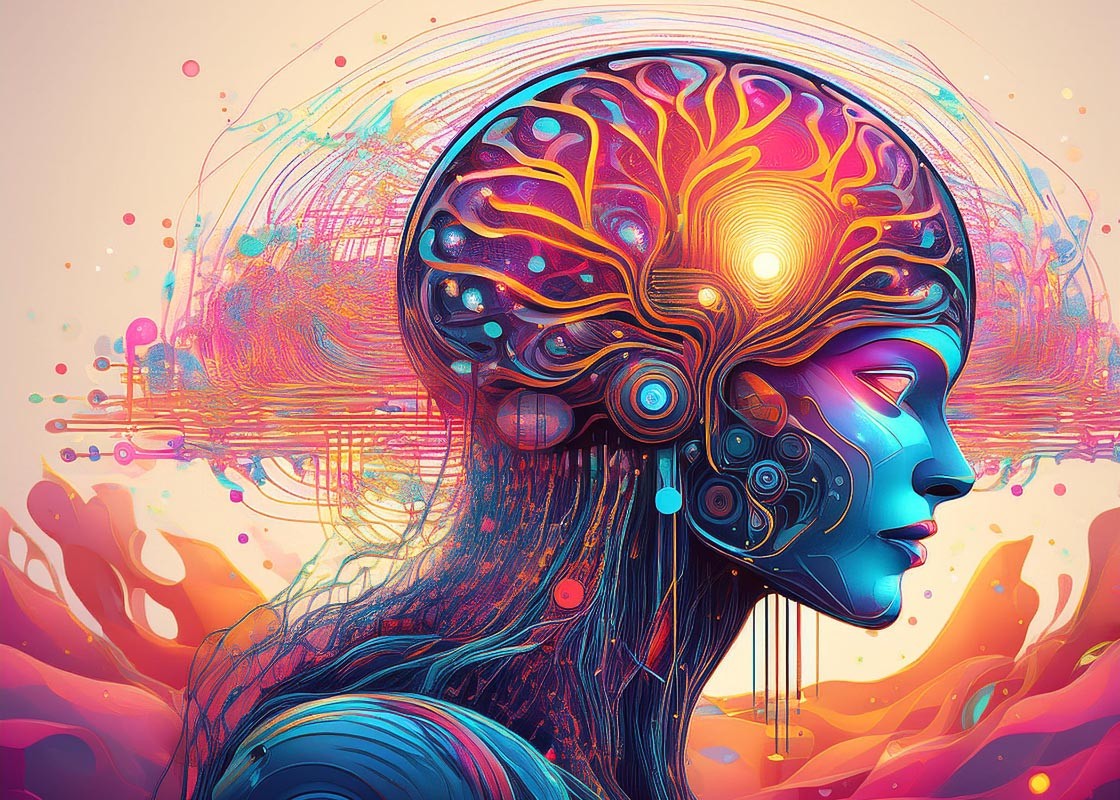First in a series examining Artificial Intelligence as a creative co-pilot.
For Bill Gates, founder of Microsoft Corporation, there have been two truly significant technological breakthroughs during his lifetime. The first was in 1980 when he saw a demo of the Graphical User Interface (GUI), which became the forerunner of every modern computer operating system, including Microsoft Windows. The “second big surprise” was in 2022 when Gates challenged OpenAI, the tech startup behind ChatGPT, an Artificial Intelligence (AI) platform. It only took a few months for the chatbot to complete an Advanced Biology placement test versus the 2-3 years that Gates expected. In a subsequent blog post Gates declared "the age of AI has begun."
AI Pros and Cons
According to this Coursera article, AI "refers to the development of computer systems capable of performing cognitively complex tasks that traditionally only a human could perform." The five main benefits of such systems to business and society as a whole are: 1) automate repetitive tasks, 2) quickly analyze big data sets, 3) improve decision making, 4) quickly generate new material, and 5) reduce operational costs.
On the flip side, potential threats of AI include job losses due to replacing employees with AI, biased and skewed perspectives caused by how AI systems are trained, and a lack of creativity normally exhibited by skilled human professionals. Great controversies also surround AI, the biggest of which centers around the creation of Artificial General Intelligence (AGI) which would allow AI to match or surpasses human cognitive capabilities. Many see this as an existential threat to human existence.
Creative Implications
Similar issues and concerns are raised when looking at AI through the lens of creative professionals (artists, photographers, illustrators, etc.) Why do creatives feel threatened by AI? Below is an itemized response provided by ChatGPT:
1. Job Displacement and Devaluation
AI can quickly generate high-quality art, making it appealing to businesses seeking cost-effective solutions, potentially replacing human artists. The ease of producing AI art might also lead to a perceived decline in the value of human-made art.
2. Ethical Issues
Many AI models are trained on artists’ work without their consent, raising concerns about intellectual property theft. AI can also mimic an artist’s unique style, leading to debates over whether this constitutes fair use or unethical copying.
3. Loss of Creative Identity
An artist’s distinctive style can be replicated, diluting their creative brand. And, AI-generated art often follows trends, potentially overshadowing unique, innovative human expressions.
4. Economic Inequality
Larger organizations can leverage AI more effectively than individual artists, creating an uneven playing field. In addition, new artists may struggle to compete against the speed and efficiency of AI tools.
5. Cultural and Philosophical Concerns
Many value art for its emotional depth and human touch, which AI lacks, and over-reliance on AI might diminish society’s appreciation for the skill and effort behind traditional art.
6. Rapid Change
The fast pace of AI development often outstrips ethical and legal frameworks, leaving artists feeling vulnerable.
ChatGPT concludes it's response with this: "While some view AI as a threat, others see it as a tool to expand creative possibilities. Balancing AI innovation with respect for artists’ rights and creativity is essential for a harmonious future in the arts."
It's that part in bold above that stood out most to me and a big reason why I wanted to undertake a more intensive look at this technology. While I understand the downsides, it's the potential of AI as a creative collaborator that has me excited. If AI can be effectively trained on our visual aesthetic and stylistic preferences, it could make us a better version of our creative selves by providing insights we either could not uncover on our own, or could us take many times longer to do so.
"While some view AI as a threat, others see it as a tool to expand creative possibilities."

This technology is so crucial it can't be ignored. In future posts I hope to further delve into the potential (and risks) of AI for creatives, and what it means for my own personal development in particular. Examples will be provided as I start working with AI image-generation tech, including a beta version of Adobe Photoshop, which I currently have access to as a subscriber of Adobe Creative Cloud software. The sophisticated illustration shown above, also used for the cover image and introduction to this article, was created using a simple text prompt/description in Photoshop Beta. Please join me as I dive into the world of creative AI.

